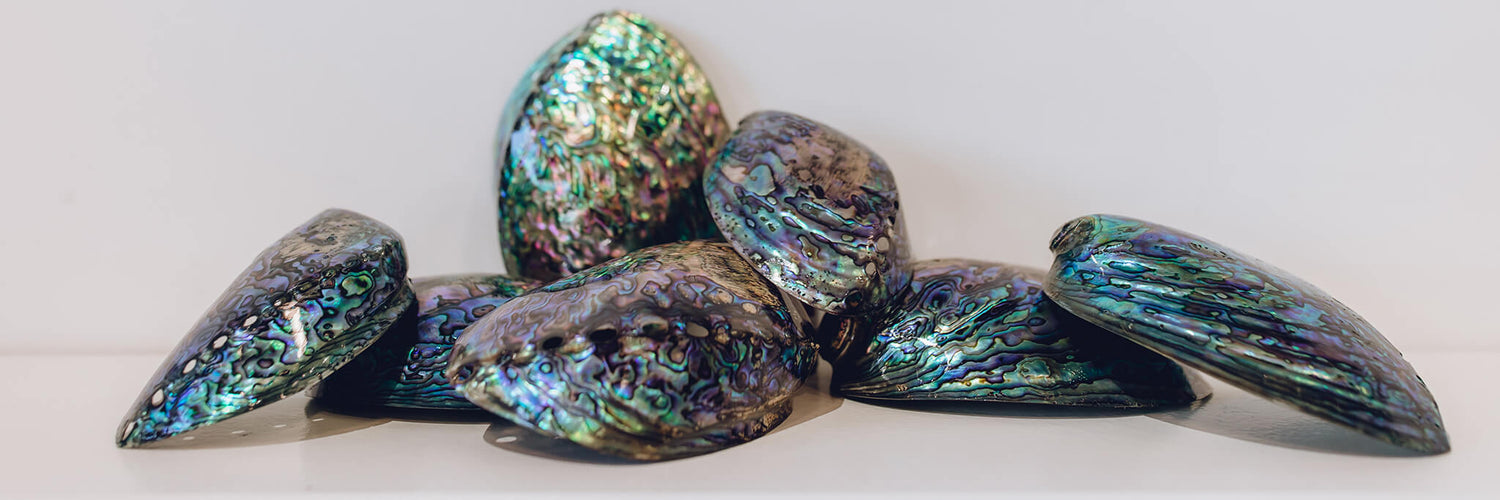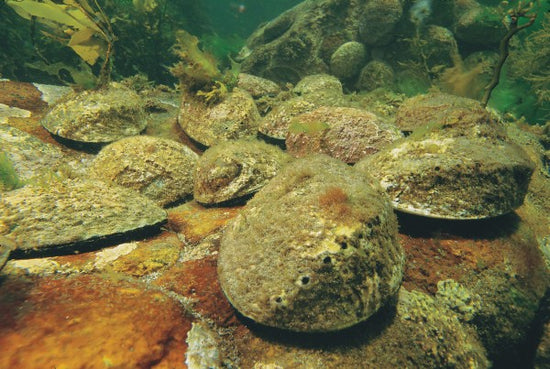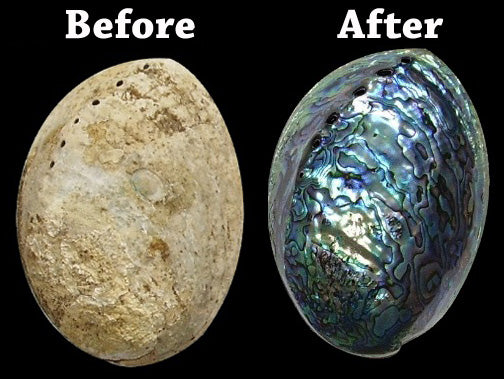About Paua
Paua is a member of the abalone family (Haliotidae) of which there are around 140 species worldwide. The paua is native and unique to the cold, blue waters of the New Zealand coastline.
There are three types of Paua in New Zealand:
Paua - Haliotis Iris - The largest, most common and best known of our species. The shellfish is black and the interior of the shell has waves of colours with blues and greens being dominant.
Silver or Queen Paua - Haliotis Australis - A smaller species readily distinguished by the silvery lustre of the inside, the ridging of the outside and by the yellow colour of the shellfish. It lives in the same areas as the large paua but is not so common.
Virgin Paua - Haliotis Virginea - Much smaller and rarer, with a most attractive and strongly coloured shell. The shellfish is a dirty whitish colour and is not often seen alive.
Paua are marine monovalve molluscs that live in rocky, coastal areas at depths between 1 and 15 metres. They graze on seaweed and range in size from 70-140mm at maturity, but can grow to a maximum of around 200mm. Paua grow larger in the cool South Island waters than they do in the warmer north. Consequently, most paua are harvested from the South, Chatham and Stewart Islands and from the North Island’s southern coast. The holes in the shell are for breathing and reproduction.
Paua Shell is the most colourful and vibrant of all the abalone shells. The shell is iridescent in that the colours in the paua shell change when viewed at different angles, this makes paua shell sort after as a gem for use in jewellery. Every paua is different in its colours and patterns within the shell. The black patterns in the shell come from layers of protein that are laid down between the layers of calcium that make up the shell. The brilliant colours are from light being refracted within the crystal layers. Paua shell is traditionally used by Maori to illuminate the eyes of their carving and artwork.
New Zealand's paua fishery is managed by strict quotas, which allow only a set amount of paua to be taken commercially each year. Restrictions on size and harvesting method also apply: they must have a minimum shell length of 125mm and can only be harvested by free-diving. The use of compressed air equipment is strictly prohibited. The recreational taking of paua is governed by the same size and method restrictions with 10 paua being the daily catch limit per person.
Severe penalties are in place for those who would break the laws. This maintains a sustainable and environmentally sound fishery.



